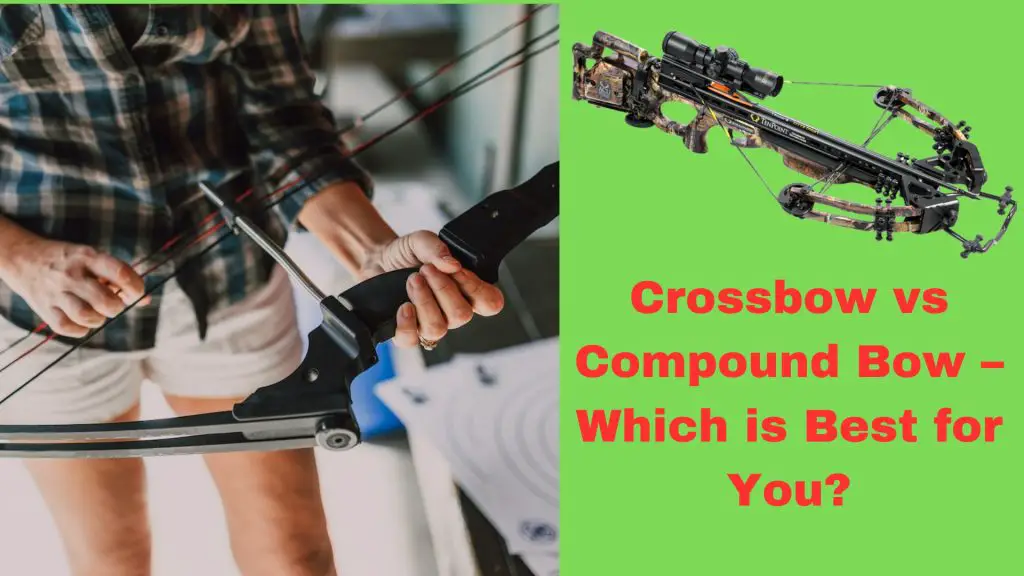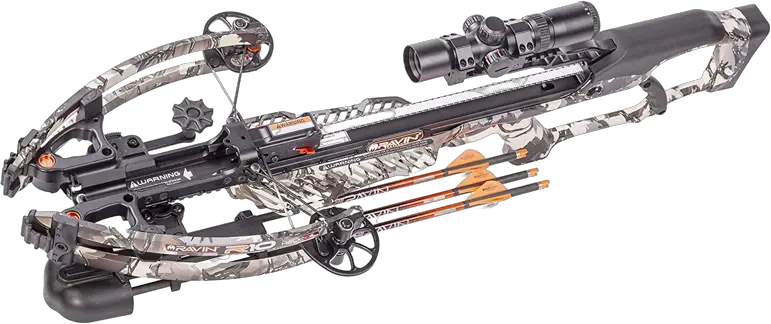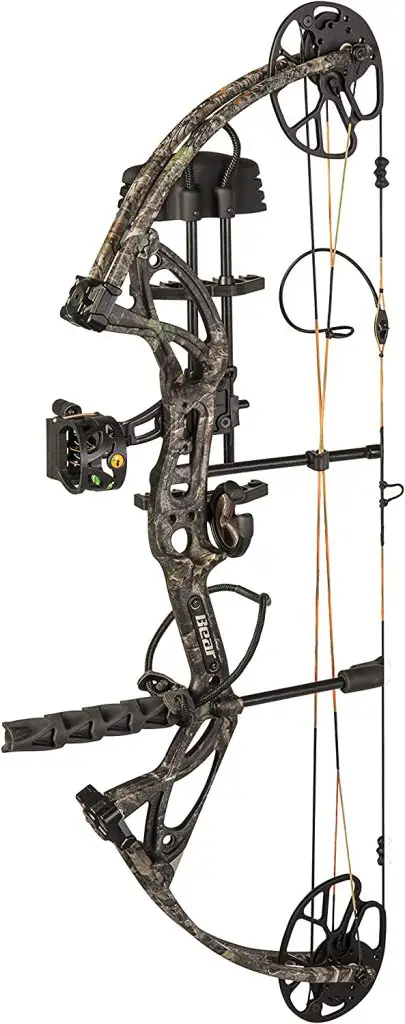Crossbow Vs Compound Bow – Which Is Right For You?
Are you a beginner who’s confused about whether to go for a compound bow or a crossbow? Well, you’re not alone.
Many beginners find it challenging to choose between these two popular hunting weapons. Each has its advantages and disadvantages, and the choice ultimately depends on your needs, hunting style, and personal preferences.
But don’t worry; we’ve got you covered! In this article, we’ll explore the key differences between crossbows and compound bows and help you choose the right weapon for your hunting adventures. So, let’s dive in and find out which one is the best fit for you!

Quick Answer: In brief, crossbows are user-friendly and offer greater power, whereas recurve and compound bows require training but provide more accuracy once mastered. While both are suitable for hunting, only recurve and compound bows are typically permitted in tournaments according to most competitive archery associations.
Understanding the Crossbow
Crossbows have become a popular choice for hunters and archers alike. They offer several advantages over traditional bows, such as a longer effective range, more power, and ease of use.
In this section, we will dive into the mechanics of the crossbow and explore what makes it such an effective weapon.
What is a Crossbow?
A crossbow is a type of ranged weapon that consists of a bow mounted on a stock, with a mechanism for pulling the bowstring back and releasing it to propel a bolt or arrow.
Crossbows are similar to traditional bows in that they use a bowstring to propel an arrow or bolt, but they have a few key differences.

How Does a Crossbow Work?
A crossbow uses a horizontal limb assembly mounted on a stock to shoot bolts or arrows. The bow is mounted perpendicular to the stock, and a string is attached to both ends of the bow.
The string is drawn back by a mechanism, such as a lever or crank, which allows the user to hold the string in place until they are ready to release it.
When the trigger is pulled, the string is released, and the bow snaps forward, propelling the bolt or arrow towards the target.
The bolt or arrow is held in place by a track, which keeps it stable during the firing process.
Types of Crossbows
There are two main types of crossbows: recurve and compound.
Recurve crossbows are simpler in design and have been used for centuries. Compound crossbows, on the other hand, use a series of pulleys and cables to provide greater power and accuracy.
Advantages of Crossbows
- Ease of Use – Crossbows are easier to use than traditional bows because they can be held at full draw for longer periods, allowing the user to take aim more carefully.
- Power – Crossbows have more power than traditional bows, making them ideal for hunting larger game at longer distances.
- Accuracy – Crossbows are more accurate than traditional bows because they are held in a more stable position when firing.
E. Disadvantages of Crossbows
- Weight – Crossbows are generally heavier than traditional bows, making them more difficult to carry for long periods.
- Noise – Crossbows are generally louder than traditional bows, making them less ideal for hunting situations where noise is a concern.
- Price – Crossbows are generally more expensive than traditional bows, making them a less attractive option for beginners.
Crossbows are an effective and versatile weapon that offer several advantages over traditional bows.
However, they also have their own unique set of disadvantages that should be considered before making a purchase.
When deciding between a crossbow and a traditional bow, it is important to consider your individual needs and preferences to determine which is right for you.

Understanding the Compound Bow
A compound bow is another popular choice for hunters, and it uses a pulley system to make the bow easier to draw and hold at full draw.
The pulley system also allows the archer to hold the bow at full draw for longer periods of time, making it easier to take aim and release the arrow with precision.
Parts of a Compound Bow
- Riser: The central part of the bow where the other components are attached.
- Limbs: The flexible part of the bow that stores energy when the bowstring is pulled back.
- Bowstring: The string that attaches to the cams or wheels and powers the bow.
- Cam or Wheel: The pulley system that helps with drawing the bowstring back and holding it at full draw.
- Cable: Connects the cams or wheels to the opposite limb and helps distribute the tension evenly.
Advantages of a Compound Bow
- Higher speed: Compound bows can shoot arrows at higher speeds compared to traditional bows or crossbows.
- Accuracy: The pulley system of a compound bow allows for a more consistent and accurate shot, especially at longer distances.
- Easier to hold at full draw: The pulley system also allows the archer to hold the bow at full draw for longer periods, making it easier to take aim and release the arrow with precision.
- Smaller size: Compound bows are typically smaller in size and more maneuverable compared to crossbows.
- Quieter: Compound bows tend to be quieter than crossbows, which can be an advantage when hunting.
Disadvantages of a Compound Bow
- Learning curve: The pulley system and mechanics of a compound bow may take some time to learn and master.
- Requires physical strength: While the pulley system makes it easier to hold the bow at full draw, it still requires physical strength to draw the bowstring back.
- Limited power stroke: The pulley system has a limited power stroke, which can affect the speed and power of the arrow.
- Not ideal for certain hunting situations: The smaller size of a compound bow may not be ideal for hunting in certain environments, such as thick brush or heavily wooded areas.
Overall, a compound bow is a great choice for hunters who want a balance between speed, accuracy, and ease of use.
It may take some time to learn and master, but with practice, it can be a highly effective hunting weapon.
Key Differences between Crossbows and Compound Bows
Now that we have an understanding of what crossbows and compound bows are, let’s take a closer look at the key differences between these two types of bows.
Power and Speed:
When it comes to power and speed, crossbows generally have an advantage over compound bows.
The draw weight of a crossbow, which refers to the amount of force required to cock the bow, can range from 75 pounds to over 200 pounds.
In comparison, the draw weight of a compound bow usually ranges from 30 to 80 pounds.
The higher draw weight of crossbows translates into higher kinetic energy, which is the energy that is transferred to the arrow upon release.
This higher kinetic energy allows crossbows to shoot arrows at much higher velocities than compound bows.
The fastest crossbows on the market can shoot arrows at speeds of over 400 feet per second (fps), while the fastest compound bows generally shoot arrows at speeds of around 350 fps.
This higher power and speed of crossbows make them well-suited for hunting larger game at longer distances.
For example, the TenPoint Nitro XRT crossbow has a draw weight of 225 pounds and can shoot arrows at speeds of up to 470 fps, making it capable of taking down large games like elk and moose at distances of up to 100 yards or more.
In comparison, the fastest compound bow, the Mathews Vertix, has a draw weight of 80 pounds and can shoot arrows at speeds of up to 343 fps, making it better suited for smaller game and shorter distances.
Range
In terms of range, there are two types to consider – the overall range and the effective range.
Typically, the average compound bow has an overall range of approximately 100 yards, but its effective range depends on the archer and ranges between 30-60 yards.
On the other hand, some crossbows have the capability of shooting up to several hundred yards, although with less accuracy.
However, for hunting or target shooting, a proficient archer could consistently hit targets up to 80 yards away. For the average archer, the effective range would be around 30-60 yards.
Accuracy:
Both crossbows and compound bows can be accurate, but compound bows are generally easier to shoot accurately due to their longer power stroke and shorter limbs, which reduces vibration and makes them more forgiving of minor errors in technique.
Reload Time:
Crossbows have a longer reload time than compound bows, as you need to manually reload the arrow and re-cock the bowstring after each shot.
Compound bows, on the other hand, can be shot more quickly, as you only need to nock the arrow and draw the bowstring back.
Size and Weight:
Crossbows tend to be bulkier and heavier than compound bows while Compound bows are generally more compact and lightweight
For instance, the popular Ravin R20 crossbow weighs around 7.1 pounds, while the Bear Archery Cruzer G2 compound bow weighs only 3 pounds.
Similarly, the overall length of crossbows is usually longer than that of compound bows. For example, the popular TenPoint Nitro XRT crossbow is 30.7 inches long, while the Bear Archery Cruzer G2 compound bow is only 30 inches long.
This difference in weight and size can make crossbows more challenging to carry and maneuver, particularly in tight spaces, such as thick bushes or narrow hunting blinds.
Compound bows, on the other hand, tend to be more compact and lightweight, making them easier to handle and maneuver in various hunting situations.
The smaller size and lighter weight of compound bows also make them ideal for hunting in areas with terrain obstacles that require quick and agile movements.
Noise:
Crossbows tend to be louder than compound bows due to the mechanics involved in firing the arrow.
This can make them less desirable for hunting in some situations, as the noise can alert game animals to your presence.
Cost:
Crossbows typically have a more complex design than compound bows, with additional components such as the cocking device and trigger mechanism.
The additional components required to make a crossbow work can make it more expensive to manufacture, and therefore more expensive to purchase.
According to a survey conducted by Archery Business magazine, the average retail price for a crossbow in 2020 was $826, while the average retail price for a compound bow was $566. This suggests that crossbows are generally more expensive than compound bows.
Moreover, even the entry-level crossbows can be more expensive than intermediate-level compound bows. For example, a beginner crossbow can cost around $300-$500, whereas a beginner compound bow can be purchased for as little as $150.
This significant difference in price can make crossbows a less appealing option for beginners or those on a tight budget.
Rules & Regulations
The rules and regulations governing the use of crossbows in hunting are more diverse than those for vertical bows.
Some state wildlife agencies allow all bowhunters to use crossbows, while others restrict them to older or disabled hunters.
In some states, crossbows are permitted only during specific parts of the season or on certain properties, while in others, they are treated no differently than vertical bows.
It is crucial to check the regulations in your state before hunting with a crossbow to ensure that you are following the law.
Which Bow is Right for You? Crossbow Or Compound Bow
Choosing the right bow ultimately depends on your individual preferences and intended use. If you’re looking for power and speed, and plan to hunt larger game at longer distances, a crossbow may be the better choice.
However, if you prioritize accuracy, ease of use, and portability, a compound bow may be the better option for you.
It’s also worth considering your physical abilities and limitations, as crossbows tend to be heavier and require more strength to operate, while compound bows require more technique and precision in the shooting.
Overall, both crossbows and compound bows are capable hunting and archery tools, and the choice between them ultimately comes down to personal preference and intended use.
Whatever you choose, be sure to practice proper safety techniques and always follow local laws and regulations when hunting or shooting.
Choosing the Right Bow for You
Now that you have a better understanding of both crossbows and compound bows and their key differences, it’s time to choose the right bow for you. Here are some factors to consider:
Define Your Purpose
The first and most important factor to consider is your purpose for using the bow. Are you a hunter, target shooter, or both?
If you’re primarily a hunter, a crossbow may be a better choice due to its greater power and accuracy. If you’re a target shooter, a compound bow may be a better choice due to its greater versatility and ease of use.
Skill level Matters
Another factor to consider is your skill level.
Crossbows tend to be easier to use and require less practice to become proficient, while compound bows require more practice and skill to master. Also, It takes longer to condition the muscles required to shoot a compound bow well than it does for shooting a crossbow.
If you’re a beginner, a crossbow may be a better choice, while more experienced archers may prefer the challenge of a compound bow.
Physical ability
Crossbows tend to be heavier and bulkier than compound bows, which can make them more difficult to carry and maneuver.
If you have limited physical ability, a compound bow may be a better choice due to its lighter weight and greater maneuverability.
Cost Factors
Both crossbows and compound bows can vary greatly in cost, from a few hundred dollars to several thousand dollars.
Consider your budget when choosing a bow, but keep in mind that a higher price tag often means higher quality and performance.
Don’t Take Laws In Your Hands
State wildlife agencies are responsible for regulating archery seasons and equipment criteria.
It’s important to note that each state has its own set of regulations for minimum draw weight requirements for vertical bows, and crossbow regulations also vary widely.
Therefore, before purchasing a bow, make sure it’s legal to use for hunting in your area by checking with your state’s wildlife agency.
See Your Personal preference
Ultimately, the best bow for you is the one that feels the most comfortable and natural to use.
If you have the opportunity, try out both a crossbow and a compound bow to see which one feels better in your hands and suits your personal preferences.
Conclusion
Choosing between a crossbow and a compound bow ultimately depends on your personal preferences, hunting style, and physical abilities. Both have their advantages and disadvantages, and it’s up to you to decide which one suits you best.
Check: Compound vs Recurve Bows
If you prefer a more traditional and challenging experience, the compound bow may be the way to go. It requires more skill and practice to master, but once you do, it can be incredibly rewarding. On the other hand, if you value ease of use, accuracy, and power, a crossbow may be a better fit for you.
It’s important to note that both crossbows and compound bows require significant investment in terms of time and money.
You’ll need to spend time practicing and honing your skills, as well as purchasing the necessary gear and equipment.
You might be interested in
When making your decision, consider factors such as your budget, hunting goals, and physical abilities. It’s also a good idea to try out both options before making a final decision.
Ultimately, both crossbows and compound bows have their place in the hunting world, and it’s up to you to decide which one is the right fit for your needs and preferences.
